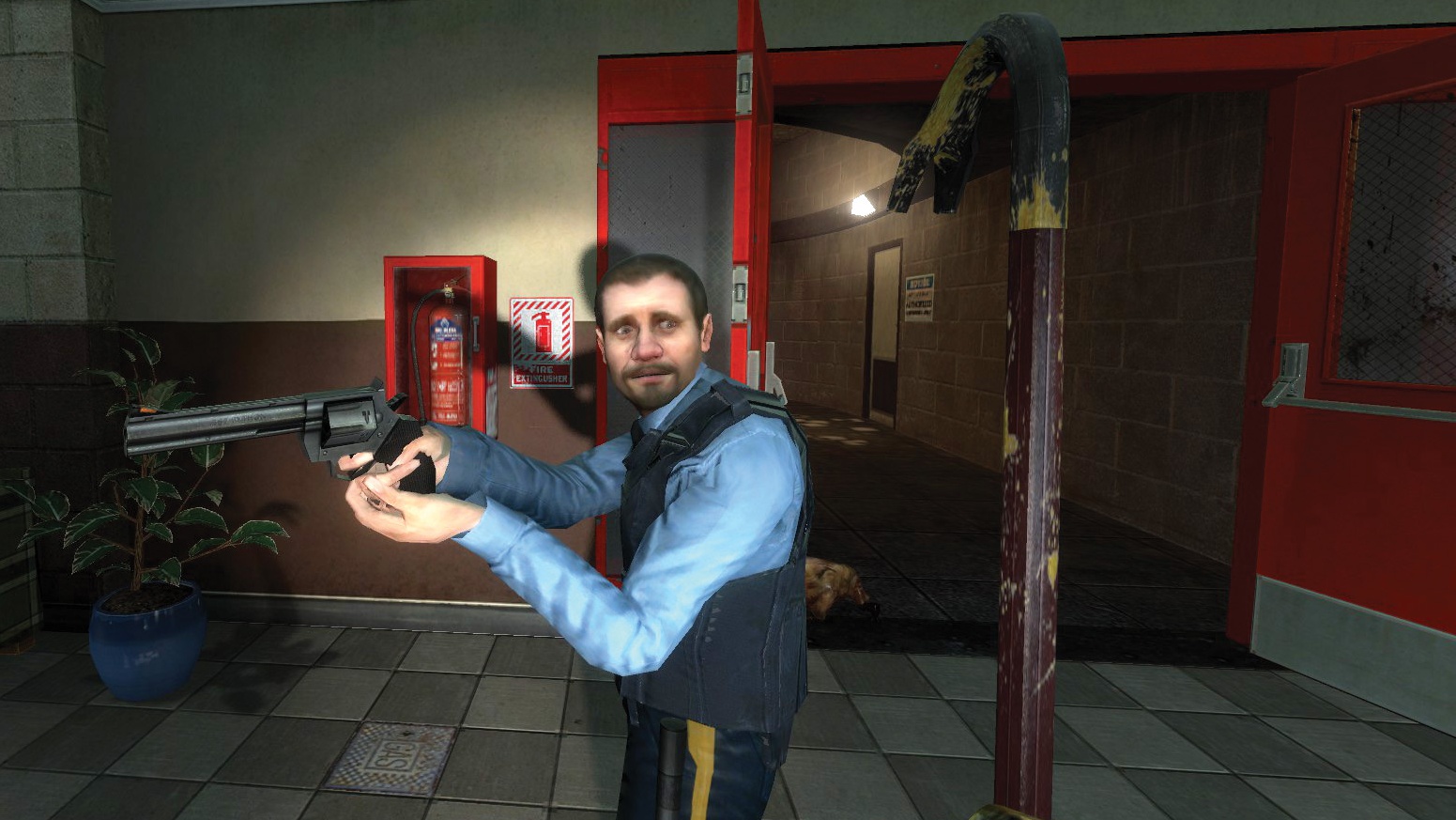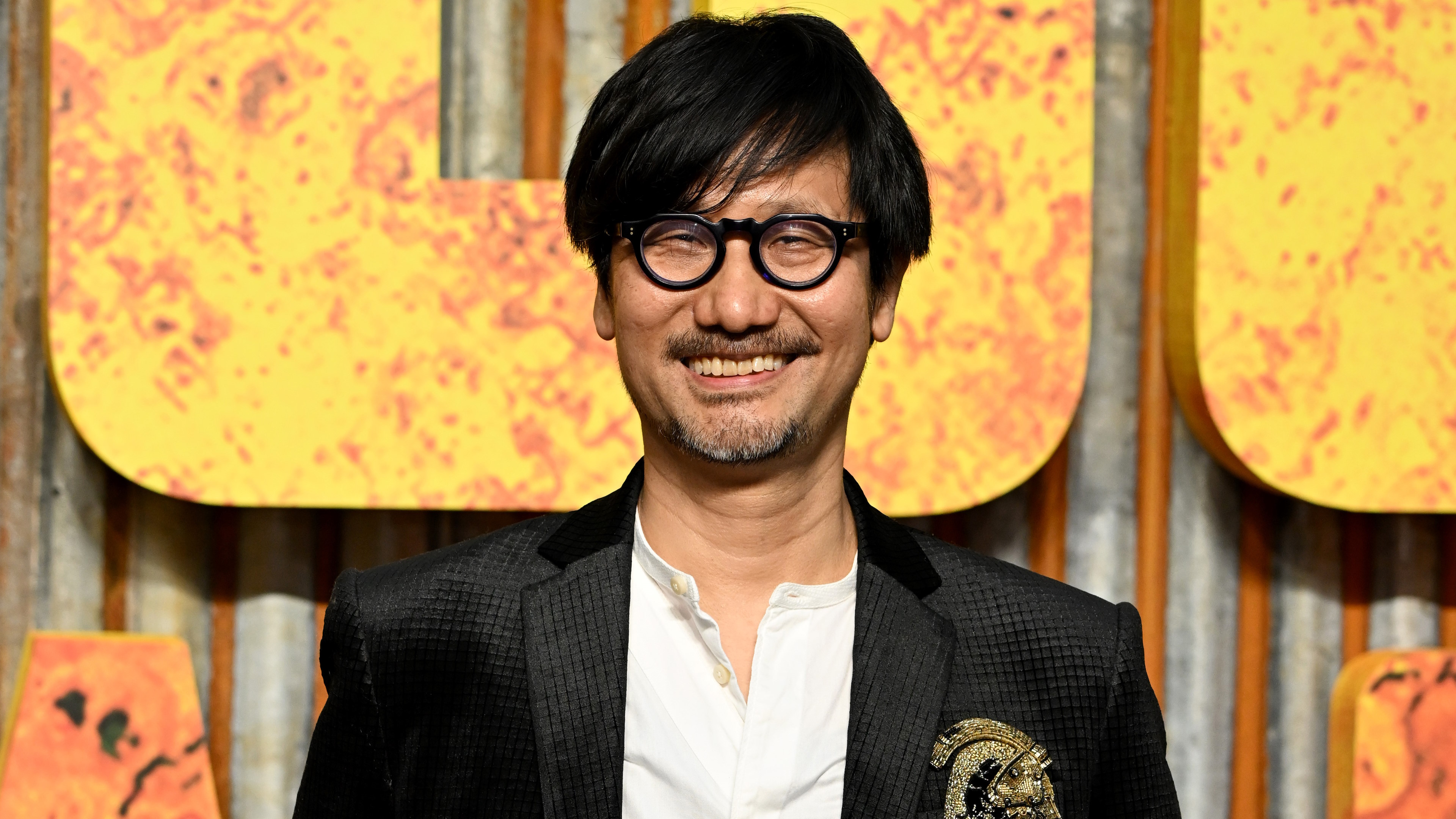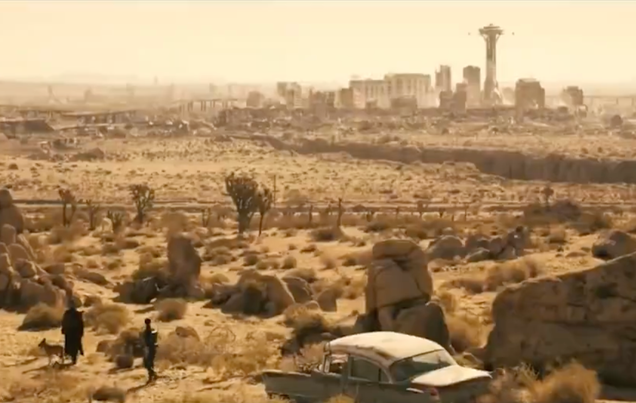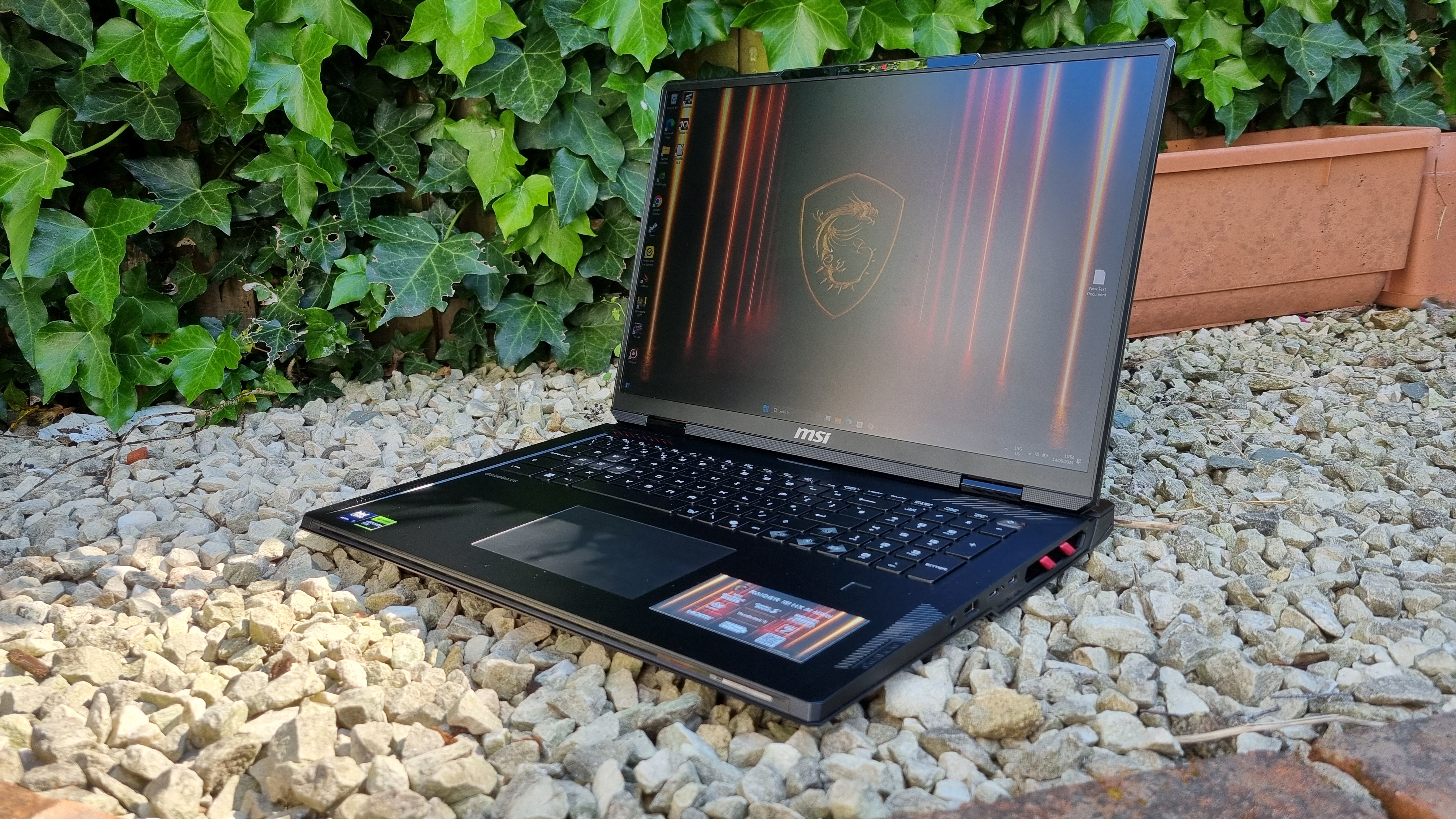
We Ask the Indiana Jones Devs If Great Circle's Story Is Canon And Whether You Can Choose Poorly
Indiana Jones and the Great Circle is billed as a love letter, but it’s not quite what fans might expect from either the beloved action franchise or developer MachineGames — the studio behind hit games like Wolfenstein: The New Order. Instead it’s a methodical game in which Indy dons disguises, creeps around famous areas like the Pyramids of Giza, and solves ancient puzzles. It’s less brawling on a tank heading for a cliff’s edge, and more like the classic LucasArts adventure game, Fate of Atlantis.
“We have [action setpieces], but there’s so much more and that’s why the character is so interesting. He’s a professor, he’s an archeologist, but he also know how to punch,” MachineGames Creative Director Jens Andersson says.
This unorthodox approach to Indiana Jones — not to mention the decision to put it in first-person — has left plenty of fans feeling non-plussed. But Andersson and Lucasfilm Games Craig Derrick say that they’re making an authentic Indiana Jones experience, even if they won’t confirm one way or another whether it’s canon.
“It needs to be a stand-alone story. And where we go from there, we’ll see. It needs to be a self-contained story, like any of the movies,” Andersson says.
In an interview conducted during our hands-on preview of The Great Circle, we quizzed Andersson and Derrick on how it’s handling action, whether you can “choose poorly,” the PS5 Pro, and numerous other topics, and you can find their answers below. As for Indiana Jones and the Great Circles, it’s set to release on Xbox and PC on December 9, with a PS5 release date set for spring 2025.
As we get closer to release, what has MachineGames had to learn over the course of this experience in order to make Indiana Jones everything you want it to be?
Jens Andersson, Creative Director, MachineGames: Well, it’s been a long development. We had to learn a lot, but I talked about this just now as well a little bit, where you bring everything you have from your previous project into the next project. So you have this base to build on going all the way back from Chronicles of Riddick and The Darkness… Wolfenstein… but applying the same processes that we did those games to an Indiana Jones game.
That means story first, focusing what’s the story we want to tell. Focus on the characters. What do you want to do as Indiana Jones? Then build it from there. And then we pull in all the things we’ve learned over the years on what works and what doesn’t, and what we like, what we don’t like. And I think the things that we needed to learn, obviously we needed to deviate from the double shotgun kind of approach to a game where you have a whip and then you have a revolver and you have your brains. We need puzzles in there. How do we do those with our design sensibilities, with our player agency driven kind of mentality?
So how do we make it feel like you’re playing Indiana Jones, that’s all there is really. And then extrapolate from there.
I think when a lot of people think of Indiana Jones, they think of Indy running away from the boulder or fighting Nazis on the tank or various action set pieces.
Andersson: And we have those, but there’s so much more and that’s why the character is so interesting. He’s a professor, he’s an archeologist, but he also know how to punch. He infiltrates, he uses disguises. There’s a wealth of interesting choices that this character makes that we want to bring to the player.
I think one of my favorite moments is from Last Crusade where it’s like you have chosen wisely or you’ve chosen poorly. Are those kinds of choices in Great Circle? Can you insta-age into a corpse?
Andersson: Well, we don’t want to have insta-kill moments when you pick the wrong object necessarily, but… There is gnarly stuff in there as well. We are trying to make this as an authentic Indiana Jones story as we can. There’s plenty of good story beats that fits into an Indiana Jones’ story and universe, and we want to make that as much as possible. There’s obviously some things that happen that works better in our game setup, being a first-person adventure game, like the boulder thing, you have something coming at your back. It’s hard to do something like that in first-person, while puzzles are such a big part of the Indiana Jones character, even though we don’t see too much in the movies. So we’re try to do that really well instead.
Craig Derrick, Executive Producer, Lucasfilm Games: We don’t really have jump scares necessarily, but we have the creepy crawlies sometimes… And there’s a couple of moments when you’ll see Indy in a precarious situation and you’ll feel like it’s claustrophobic. You’ll feel like it’s a little bit scary and still in the safest possible way, but I think we bring much of that, as you say, authenticity of the films into this game throughout it. It’s an extraordinary experience to go through.
There was a point where I was in the Vatican and I pulled out my revolver and I shot a bunch of Nazis. But you made it so you can’t shoot the dog.
Andersson: Yeah, we made it so you can’t shoot the dog directly… [Indiana Jones] is a dog person. So this is obviously a little bit different than Wolfenstein as well, where the dog will explode. But it’s family-friendly IP in many ways. How do we do that well? Well, these are the kind of things that we do. We have dogs as enemies, but you don’t really hurt the dogs. You scare them away.
I’m kind of relieved honestly because there’s so many games where I’m like, “I don’t want to do that. Don’t make me hurt the dog.”
Derrick: I saw you do it, too. I saw you get to that moment and I thought, “I wonder if she’s going to try.”
Well, it was going to eat me otherwise, so it was kind of a kill or be killed kind of moment. Talking about iD Tech briefly, I’m wondering what advantages iD Tech affords over something like say Unreal Engine?
Andersson: So we’ve been working with iD Tech for a long, long while now. We’ve actually branched off, and applied our own special sauce to it. The big advantage with having your own engine is that you get to do whatever you want — you can tailor the engine towards what you are trying to do. At the same time, it’s such a robust engine. That’s why we’re doing the PlayStation 5 version. It’s by nature a multi-platform engine. So we get a little bit of what’s good in both worlds. There are other engines out there that are really good, but I think we can compete with them visually toe-to-toe, is that the saying?
You brought up the PS5. How’s the move to PS5 been going and are there any plans to support the PS5 Pro with added features?
Andersson: I don’t think we’ve said anything regarding the PS5 Pro, have we? No. So we are obviously working on it. It’s coming out next spring, right? It’s going well. Again, it’s by its core, a multi-platform engine, so there are no huge restructuring or anything like that needed. So it’s going well.
What’s it been like to go from making your own franchise in Wolfenstein and that kind of thing to a licensed game where I’m sure that there are so many different check marks to go through, layers of approvals.
Andersson: So of all the games we worked on, Riddick, Darkness, even Wolfenstein, they weren’t invented at MachineGames. They’re built on another IP, even though it was kind of in-house IP. With Indiana Jones, obviously we get the pleasure of working with these guys Lucasfilm games and that’s hard, but wonderful. You need to share. But they come in with this wealth of experience and expertise. They know what makes the characters tick. They know everything about the world. They can provide all the information that we need. So it’s about finding that, “How do we make this an effective collaboration?”
Derrick: Yeah, I was just going to say, because Lucasfilm Games in collaboration with MachineGames, it very much starts off as, “What are we working on together? What’s the experience of making an Indiana Jones game and how do we make that as easy as possible?” We want them to do what they do best, which is make these great games. And as you’ve spoken about a little bit of how do they take what that DNA is and apply it to an Indiana Jones experience that might not entirely be exactly what they’ve experienced previously and how do we do that together?
And so we spent a good amount of time talking through, “What does it mean to play as Indiana Jones? What does it feel to have sort of an intellectual wit to look at a scene or look at a sequence and think of it as how would you solve this sequence? Or how would you get through this without using a gun, without this sort of violence? How do you do that?” And then if there’s an opportunity for the player to do that, what do those mechanisms do? And so much of that is just dialogue and conversation with this team. And it’s been wonderful.
Andersson: There’s a strong and mental trust that’s needed and that we have that it wouldn’t work without. And I think the way we make games at MachineGames as well makes it a little bit easier because we are such a story-first studio. So in the first couple of months of the product, we had the story already, and once you align on that, you have the bones of the game. It’s easier to come to agreement with everything else.
Derrick: Well, you solve the tone and the texture of the world that way. When you’re speaking about not just the character of Indiana Jones, but Henry Jones and the sort of globetrotting adventure part of that. When we’re working through that, it’s really what are those beats of that story? What are the important parts of the IP that we can cover? And they’ve nailed it.
If you don’t mind me saying, I think that Lucasfilm Games has a little bit of a reputation, at least among Star Wars developers, for being quite strict in its approach to the IP. Does it have a different approach to Indiana Jones and are there any lessons you’ve taken from your experiences working on Star Wars?
Derrick: No, I don’t know that… We’re protective and I think it’s important to ensure that the partners that we work with — whether it’s Star Wars, whether it’s Indiana Jones — understand how we see the world and the stories. And I think for this one, it’s been just as straightforward as the others, at least in my experience. But I think it’s all about authenticity. I know we use that a lot here, but we say, “If someone comes in, wants to tell a great Indiana Jones story and understands what that means for us, it’s also us speaking to the audience. It’s about speaking to the history of the IP. It’s about making sure that we’re doing the right thing for the audience.”
Andersson: There are a number of things that have made this easy and we are all big, big Indiana Jones fans. We want to make a game that feels like an Indiana Jones game. Once you have that, you’ve won half the battle already because we want the same thing. So the rest is figuring out the details.
Derrick: There’s no shortage of passion that we see across all our projects and this team and came right from the very beginning with that amazing story. And then just this again, said earlier, coming in and describing how they wanted to treat it makes everything else go through very, very smooth.
So do you have the same approach to Indy as you do with Star Wars or are there different considerations at play?
Derrick: I don’t think we do. I think it’s all the same. We really want to treat the worlds of our stories at Lucasfilm and Lucasfilm Games the same. We do make more Star Wars games than we do Indiana Jones games, but from that point, it’s always really the same method.
Todd Howard, I think is a producer on this project.
Derrick: Producer, yeah.
Known for being a huge Indy fan, spent a lot of time pitching it to various sources, finally got to make the game. I know he’s a very busy man. How involved is he in the day-to-day of this project?
Andersson: Well, for the majority of the project, he obviously shipped Starfield, so he had a day job, but he’s been with us all the way through, providing feedback, providing advice, so I don’t know what that means in terms of hours, but he’s been involved… This game wouldn’t exist without him obviously, so we’re happy to have him butt in and give us his expertise on everything.
So much of this game is an obvious real love letter to Indiana Jones, but does it take any swings that really push the mythos and the franchise forward? In what ways does this game look forward rather than into the past?
Andersson: I would say this is not a movie. This is a game and we’re making something big, something new, something in my mind, very exciting. We’re not seeing a new movie on the horizon, but we’re seeing a game. So that’s the primary thing that it brings. Other than that, just as you say, it’s a love letter. We are telling a very authentic Indiana Jones story, so we want to be part of it, what it means long term. Who knows?
Derrick: What I like though is that it’s sitting between Raiders of Lost Ark and The Last Crusade, and the story that you experience in this game enriches those films, as much as the films bring a lot of story back to this. You know where Indy goes from a story standpoint through this experience when you pick him back up in The Last Crusade. So there is a little bit of, it might not be moving the character forward in a different direction, but it is moving the character forward in a place that you’ve already seen.
He’s been in five movies and the Young Indiana Jones, he’s a very well-known and established character. But is there a new side of Indiana Jones to explore in this game?
Derrick: I think you see really is him being impulsive. And I think at a moment in this story, he’s running away from problems. He’s looking for that next adventure and he’s not looking to settle down. And so I think there’s a little bit of what you may already know about the character… And that might explain a little bit of who he is as a character in this time of his life. What is he running away from and what is he running to? And I think that shapes a little bit of his identity in this.
Andersson: I don’t think we’re trying to change anything. We want to build on what’s there and enrich on it.
Indy’s been all over the world in all of his movies. Was there an area in The Great Circle that you were designing that you were like, “Oh, this is fun. We’ve never really seen Indiana Jones in this particular context before.”
Andersson: We evaluated plenty of areas. The ones we ended up with are the ones that we felt were good for the story and were good for gameplay. We wanted to have these kind of varied biomes from the jungles of Sukhothai to the deserts of Giza. I’ve also seen some snowy parts of the game. It’s what you said, it’s part of the Indiana Jones to visit all these kind of different places. And that works really great for a video game as well. We want to have that. So yeah, all of these are our choices where we want the game to take place.
Is there going to be a point where the world opens up and you can jump to different areas?
Andersson: Well, in a way it’s obviously a linear, very driven story that takes you around the world. We are doing this game a little bit different than previous games that we worked on where we’re allowed to go back to previous locations and continue playing from there. It’s almost like a time jump back. So you will be able to 100 percent the game on a single save lot. And the reason why we’re doing it like that is that we have these really wide, big areas like Giza, and then we have stretches of more linear rollercoaster rides, and there’s a lot of optional content in there… a lot of hidden mysteries and things like that. So we want players who focus on the story to be able to play through it, and if they really love an area, they can go back and just finish up everything without having to replay the more linear sections. It doesn’t fit into the narrative story, but from a gameplay perspective, you can do it.
Is this game canon?
Derrick: It’s authentic to Indiana Jones. It’s authentic to the stories that we’ve told. And again, to the point of between the two movies and how the story really connects those two movies. So it’s an authentically told story that I think fits really well in everything else you’ve experienced with Indiana Jones.
Is this a standalone story or a jumping-off point with the franchise?
Andersson: It needs to be a stand-alone story. And where we go from there, we’ll see. It needs to be a self-contained story, like any of the movies.
I was asking earlier about choices. Will there be meaningful choices that you can make that impact the end of the story? Or is it more of a linear story in that regard?
Andersson: It’s more of a linear story to be honest. It’s a really well-told, well-acted by our amazing cast with a proper conclusion. And then you can keep going and discover everything that the world has to offer.
I was looking at the difficulty settings and I saw light, moderate, hard, very hard. Was there any discussion of a hardcore mode or anything even higher?
Andersson: So many discussions. Very hard is actually a very recent addition. I really like that we have separate action difficulty and adventure difficulty. I just think it’s fun with action and adventure. But more to the point, we want to make this game accessible to as wide a range of people as possible. And some people do enjoy the challenge of combat and some people enjoy the puzzles more. It is hard to have a single version of that. The action difficulty is a wider range because it makes more sense to give more options there. For the adventure part, we actually designed to versions of many puzzles and we didn’t want to have that work be exponentially harder. So it kind of works. Either you like puzzles or you don’t. For action, it’s about how twitchy it is, what feats can you pull off with the controller,
There was a talk about a separate story expansion called Order of the Giants. Can you give me any more details about that?
Andersson: No really, not. It’s coming out Spring 2025. It’s a story-based DLC. That’s what I can say.
Dial of Destiny reportedly lost $100 million for Disney, and I think a lot of people came away from that going, “Is Indy done?” And so I guess sort of bluntly I have to ask: Is Indiana Jones still relevant in 2024?
Derrick: I think Indiana Jones is still relevant in 2024. I think the characters feels really contemporary and yet also authentic to the franchise. I think what we talked about here is you have a great performer in Troy Baker who feels like he’s embodying Indiana Jones. We have a great new story at the heart of this game that players who are familiar with Indiana Jones and the stories of Indiana Jones, I think, will really feel there’s callbacks.
And again, we use the idea that this feels authentic. It feels real. It feels like it’s a part of every experience you’ve had with Indiana Jones. And then for those players that are less familiar or coming in new to this, it’s going be an introduction to the character. And I think the mix of gameplay, the way that the story plays, the focus on adventure and exploration and puzzle solving… I think there’s a way to introduce the character. And I think then to me, that makes it relevant. It makes it a really fun experience for people.
Andersson: We wouldn’t be making it if we didn’t think it was relevant. That’s the easy answer really. This game is a love letter to everything. There’s so much stuff in there that’s fan service almost, just a wealth of stuff that people who’ve seen in the movies can enjoy. But this game is coming to Game Pass. A lot of people are going to boot this up having never having seen an Indiana Jones movie, and it needs to work for them too. And so we made sure that you don’t need to know who this character is to enjoy this video game. How well they relate to it. We’ll see soon, right? I’m optimistic.
Kat Bailey is IGN’s News Director as well as co-host of Nintendo Voice Chat. Have a tip? Send her a DM at @the_katbot.







